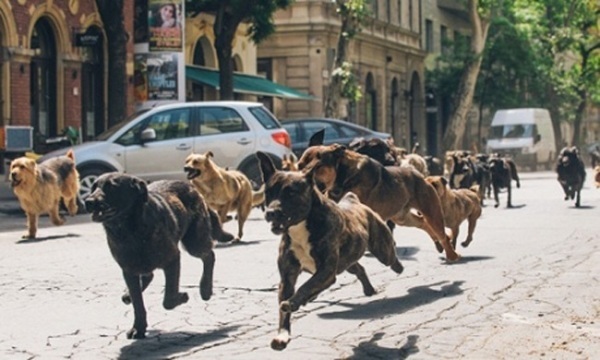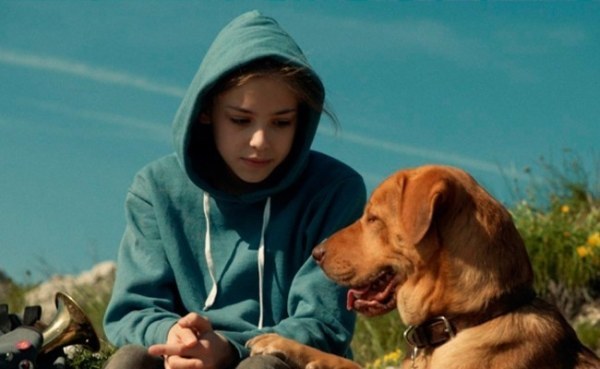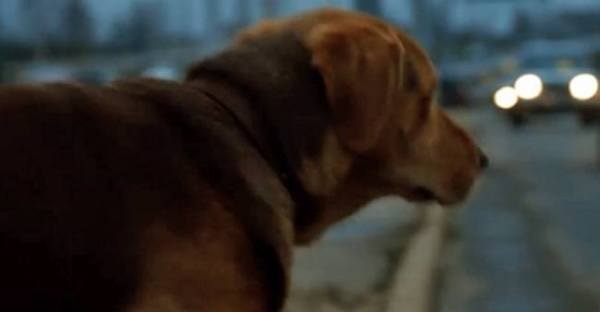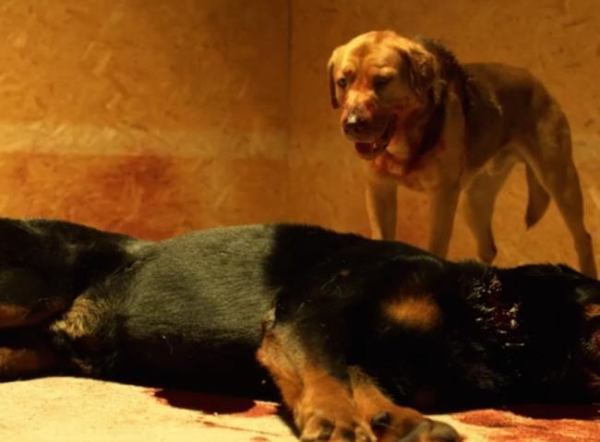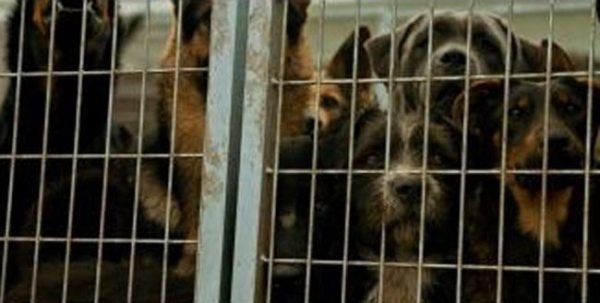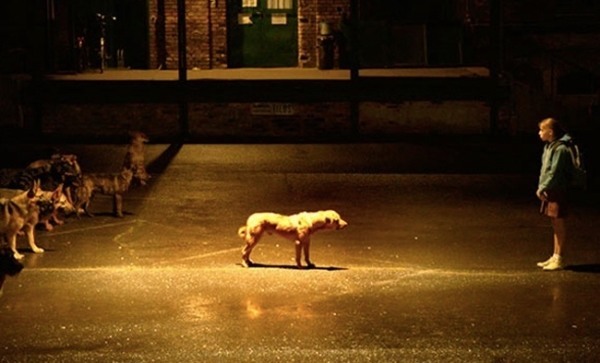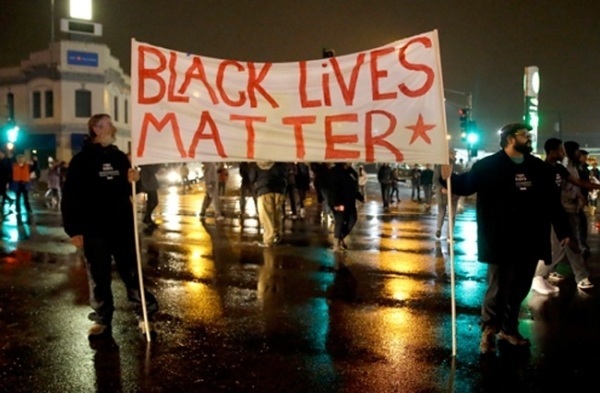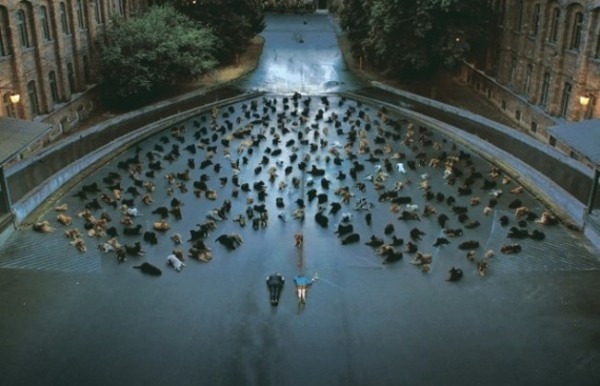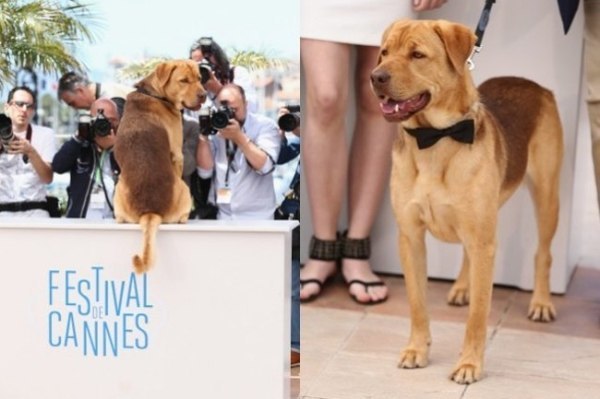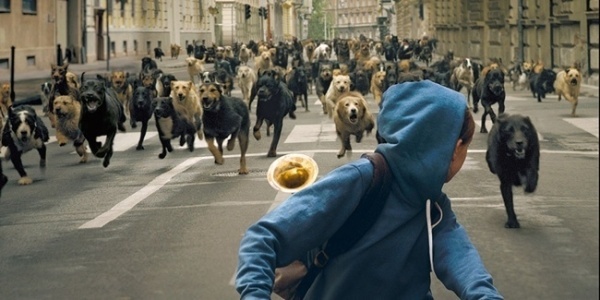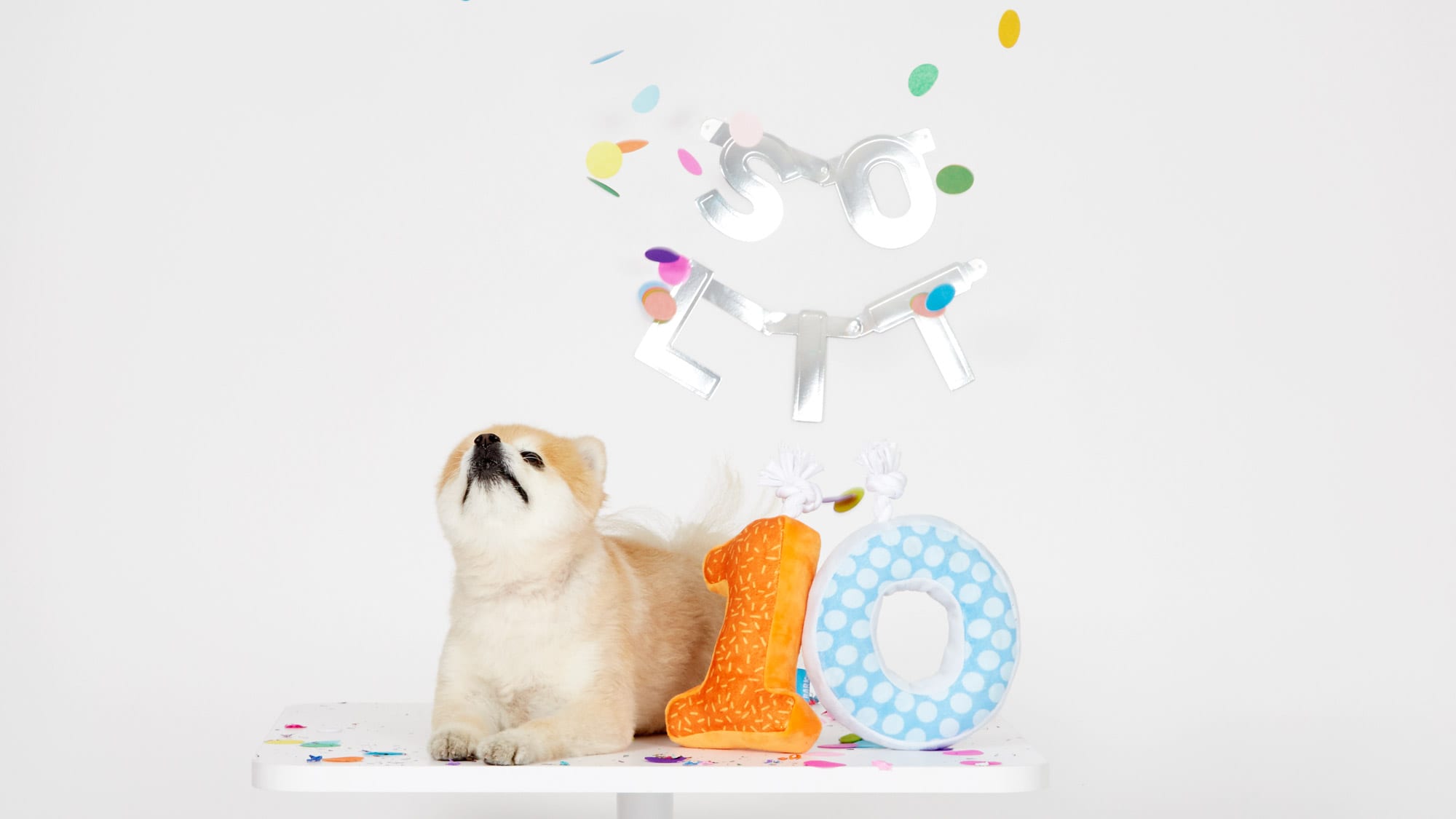Before you try guessing about the provocative title of Hungarian director Kornél Mundruczó’s new film, White God, be enlightened: Yes, he is talking about race and class and he makes no apologies for it. Nor should he. Others agree as the film won the Un Certain Regard prize at the famous international Cannes Film Festival.
In part inspired by the work of J.M. Coetzee’s eloquent book Disgrace, which directly address post-apartheid South Africa, as well as Mundruczó’s own observations on the socio-political culture of Europe, White God is a political allegory that is told through the eyes of young girl Lili and her faithful dog, Hagen–and 250 other living, breathing, real dogs.
The story is simple. When a new law in Budapest levies a tax on all people who have dogs that are “mixed,” “mongrels,” or “mutts,” Lili’s father decides to get rid of his daughter’s beloved pup. In a wrenching scene that will tear the heart of any dog lover, he forces Hagen out of the car in the street as Lili screams her protests, unable to do anything to stop it.
The film then splits into two narratives, following Lili as she navigates the fraught relationship with her father, deals with a tyrannical orchestra leader, and desperately tries to find Hagen.
Meanwhile, Hagen is forced to navigate the streets, and falls into the clutches of people who treat him like a thing for their own personal gain.
He is used by a homeless man to earn money. He then is taken by another man who violently and forcibly trains him to dog fight. Hagen escapes, and then finds a pack of street dogs who accept him. Soon however, he is corralled by the dog catchers and sent to the pound, where he and many other dogs face the constant threat of death.
It is no wonder then that Hagen, battered and disillusioned, decides to rebel against the human hand that is more likely to hurt than anything else. Joined by the other street dogs, “mutts” who are deemed unworthy by the system, they break out and start a rebellion on the streets of Budapest against every human. The storylines finally merge again when Hagen and Lili meet, and Lili is forced to choose: Will she join with Hagen, perhaps even sacrificing her life in the process, or will she remain on the side of humans?
The film is not easy to watch for any human, but especially animal lovers. There are brutal scenes of violence and abuse that Hagen is forced to endure. But before you choose to willingly stick your head in the sand, stop and consider this: Perhaps you, too, owe a debt to the dispossessed, the mistreated, the minorities we treat as lesser in our societies to watch its moving story from start to finish.
As Mundruczó wrote in an essay about the film:
“In my view, parallel to the questionable advantages of globalization, a caste-system has become more sharply defined: Superiority has truly become the privilege of white, Western civilization, and it is nearly impossible for us not to take advantage of it. Yes, us. Hence, I wanted to create a film which allows a glimpse of the passions raging on the other side, criticizing our detestable self-confidence, full of lies and lopsided truths, set on domesticating the minorities while actually wishing only to destroy them, hypocritically denying inequalities, not believing in either peace or in peaceful cohabitation…I have chosen animals as the subject instead of minorities. I did this because I wanted to focus freely on this sensitive subject; as freely and with the least number of taboos as possible. Therefore, I tell the story of animals, a dispossessed species that was once man’s best friend. But man has betrayed them, and in turn, they revolt against their former masters and companions in order to validate their existence.”
As the audience sees as they watch the film, and what they all want Lili to recognize and understand is that Hagen’s rebellion in the end IS just. “Mankind and beasts share the same universe,” Mundruczó writes. “Only if we are able to position ourselves in the place of different species do we have the chance to lay down our arms.”
It is not a truth some of us on the planet have to confront often. Then again, it is one others everywhere in the world have to manage every single day. When you are born into a minority population, there is no day off from casual prejudice, racism, classism, and yes, violence, that greets you just by walking out of the door to your home.
What Mundruczó is asking us with this beautiful, powerful film is to examine our lives, our system, our beliefs and ask ourselves some hard questions. These are not questions that are easy, and they may not have answers. But they are questions that need to be asked, even in America. If you disagree, then all you have to do is open the paper and read about Ferguson, about the NYPD Eric Garner case, examine the statistics of arrests and those incarcerated in prisons to know the real truth about our nation, that shatters the myth that we are all born equal, and treated as such.
This staggering inequality humans practice is brought home even more by the mistreatment of animals, and dogs in particular by people. And yes, this includes the U.S. Look at our strays, the abuse stories, and finally, the euthanization practices. In an interview, Mundruczó referred to a Blake quote in the Coetzee novel: “They do us the honour of treating us like gods, and we respond by treating them like things.” As much as we laud the unconditional love of dogs for us, we cannot be said to return it. Examine the 1.2 million dogs euthanized in this country alone just for existing for proof.
This fact is staggering when you consider that you cannot work or live with animals, especially dogs, without being changed–without acknowledging that they, too, are sentient beings with personalities and emotions, and yes, thoughts of their own. In an interview with the BarkPost, Mundruczó spoke about how making the film forever changed not only his relationship with dogs, but also, his core being:
“The main reward was recognizing that all 250 of the dogs had distinct, different personalities and emotions. For all us humans that was the greatest gift from the movie. Directing them was like working with human extras: They cooperated with us…They understood it’s a movie and they understood their roles. It’s really crazy –and they play and play. It was a very positive force in between us and amazing…As for myself, I felt I became changed after such a long process to nature and animals as I’ve never been before.”
With such a personal, visceral connection, it is not wonder when asked if he had a dog, Mundruczó replied, “Yes, 250!” All the dogs (none who were harmed in the filming–even the growls and snarls in the fighting scenes were actually voiceovers from humans) came from Hungarian shelters (except for the two brothers, Luke and Bodie who played Hagen, who were rescues from Arizona). And incredibly, every single one was adopted out into furever homes, an effort overseen by the crew after filming. Working with American trainer Teresa Miller and Hungarian trainer Árpád Halász, the film resolved around the pups. The script was changed if necessary, all fighting and violence was safely simulated with clever camera work, and the production itself adhered strictly to the American film industry’s strictest codes of conduct and human treatment for animal performers.
Treating animals as equals was also why the production used no CG. As Mundruczó said in an interview with MovieMaker about the film:
“Everybody said, ‘You cannot do this movie,’ with no CG and no trained, purebred dogs, trying to build up this whole world from zero. I was quite depressed after hearing this. But it just was not working for me with CG. There is no equality between the dogs and humans, using CG. We appear higher than the animals. It’s not equal, somehow. I wanted to show real dogs, and to be with them during production.”
The payoff? A movie that is probably as close to told from a dog’s point of view as one can get. The performance of all the animals, but especially the two pups who play Hagen, are phenomenal. The two dogs were also recognized at Cannes, winning the “unofficial” Palm Dog for acting.
An incredible cinematic and emotional feat, White God is an absolute must-see for not just any animal lover, but any human being. You owe it to humans to watch this. You owe it to yourself. Mostly importantly, you owe it to dogs.
For more on how the production trained and filmed with the dogs, check out the Behind-the-Scenes footage! For a glimpse of the movie, watch the preview! All are provided below. White God is currently in limited release across the U.S. For locations, check your local listings.
More Behind-the-Scenes
Trailer

